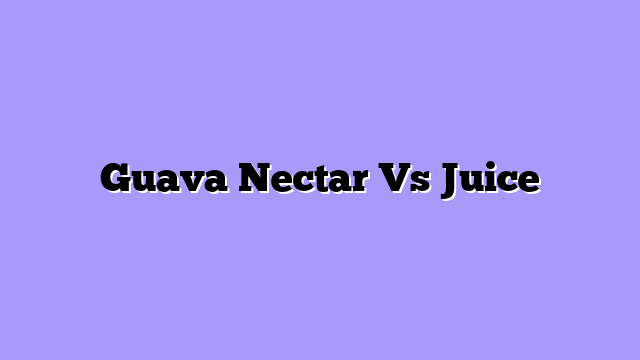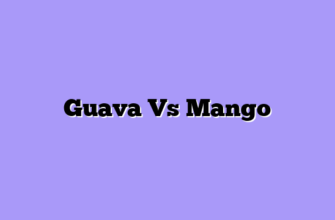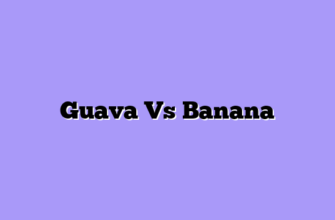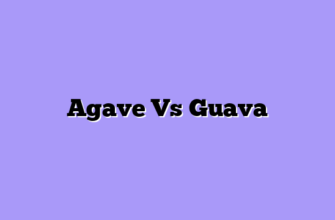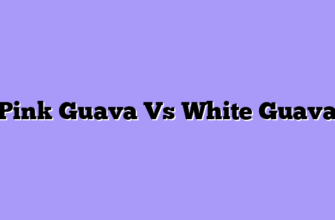Let me tell you about my love affair with what we farmers call “the apple of the tropics.” When I first started growing Psidium guajava (that’s the fancy scientific name for our beloved guava), I had no idea how this remarkable fruit would change my life. Known as goiaba in Portuguese, bayabas in Filipino, or amrood in Hindi, this versatile fruit has become the cornerstone of my exotic fruit farm in Florida.
After years of experimentation and countless conversations with fellow farmers and food scientists, I’ve become somewhat of an expert in the differences between guava nectar and juice. Trust me, there’s more to this story than you might think! The journey from fruit to bottle is fascinating, and I’m excited to share my insights with you.
You might be wondering, “Mike, what’s the big deal? Isn’t juice just juice?” Well, hold onto your farmer’s hat, because I’m about to take you on a flavorful adventure through the world of guava processing. The distinction between nectar and juice isn’t just semantic – it’s a whole different ballgame in terms of taste, nutrition, and production methods.
Every morning, as I walk through my guava groves, watching the morning dew glisten on the yellow-green fruits (or pera guayaba, as my Mexican workers call them), I’m reminded of why I chose this path. These fruits are more than just a crop; they’re my passion, and understanding how to preserve their goodness in liquid form has become my expertise.
Understanding the Basics: Nectar vs Juice
First things first – let’s clear up the confusion between nectar and juice. In my years of processing guavas, I’ve learned that pure juice is exactly what it sounds like: the liquid extracted directly from the fruit, nothing added, nothing taken away. It’s like capturing the essence of a perfectly ripe guava in a bottle.
Nectar, on the other hand, is what I like to call “juice’s sweeter cousin.” It’s a blend of juice, water, and sometimes added sweeteners. Think of it as the fruit punch of the guava world. The ratio typically follows industry standards: about 25-50% pure juice combined with water and a touch of sweetener to create a more mellow, approachable drink.
Here’s a little secret from the farm: while pure juice might seem like the healthier choice (and it often is), nectar has its place too. Why? Because pure guava juice can be incredibly intense – almost overwhelming for some palates. It’s like comparing a shot of espresso to a latte; sometimes you want that intensity, other times you prefer something more subtle.
I’ll never forget when a visiting food scientist explained it to me using a brilliant analogy: “Pure juice is like listening to an orchestra at full volume, while nectar is like having that same orchestra play at a more comfortable level, with some of the sharper notes softened.”
The Production Process
Let me walk you through how we process these beauties on my farm. When harvesting guavas (or goyavier in French), timing is everything. We pick them when they’re just right – slightly soft to the touch and emanating that distinctive sweet aroma that tells you they’re perfect for processing.

Nectar production is more of an art form, in my opinion. We start with the same high-quality juice, but then carefully blend it with filtered water and a touch of natural sweeteners. The goal is to create a balanced drink that maintains the authentic guava flavor while being more accessible to a wider range of palates.
One interesting fact I’ve learned over the years is that the pectin content in guavas makes both juice and nectar naturally thick. Sometimes, when I’m explaining this to visitors, I joke that it’s like nature’s own smoothie maker!
Nutritional Considerations
Now, let’s talk nutrition – something I’m passionate about as both a farmer and a health-conscious individual. Pure guava juice is a powerhouse of nutrients. When people visit my farm, they’re often surprised to learn that these humble fruits (which the Portuguese also call goiabeira when referring to the tree) pack quite a nutritional punch.
Here’s what you’ll find in pure guava juice:
- Vitamin C (4 times more than oranges)
- Potassium
- Dietary fiber (yes, even in the juice!)
- Antioxidants
- Natural pectin
Nectar, while slightly diluted, still retains many of these benefits, just in lower concentrations. I often tell my customers it’s like choosing between a strong tea and its diluted version – both have benefits, but in different concentrations.
The sugar content is where things get interesting. Pure juice has only naturally occurring sugars, while nectar contains added sweeteners. However, this doesn’t automatically make nectar the villain in this story. For some people, especially those new to guava, the nectar’s balanced sweetness makes it an excellent introduction to this tropical delight.
Making the Right Choice
As someone who’s spent countless hours working with these fruits (or posh as they’re known in some parts of India), I believe there’s no absolute “better” choice between juice and nectar. It really depends on your personal preferences and how you plan to use it.
Pure juice is your go-to if you’re looking for maximum nutritional benefits and don’t mind the intense flavor. It’s perfect for smoothies, cooking, or for true guava enthusiasts who want to experience the fruit in its purest liquid form.
Nectar, meanwhile, is excellent for casual drinking, mixing in cocktails, or introducing children to the world of tropical fruits. Its milder flavor profile makes it more versatile in many ways, though you do trade some nutritional density for that approachability.
At the end of the day, both products have their place in the market, and I’m proud to produce both on my farm. What matters most is that people are discovering and enjoying this amazing fruit, whether through its pure juice or in the more approachable nectar form.
